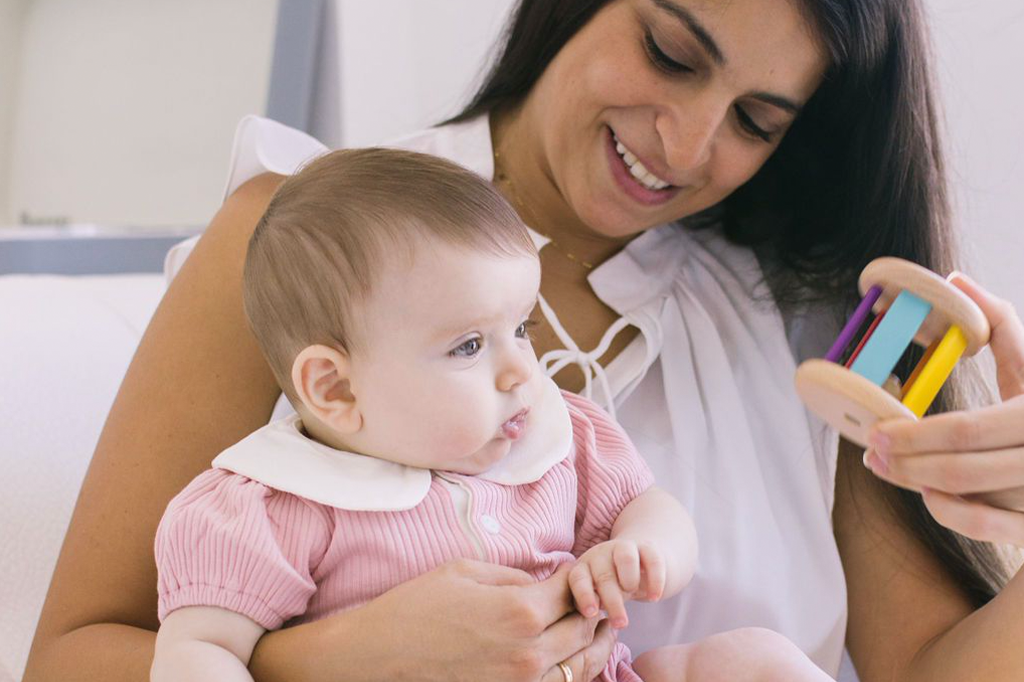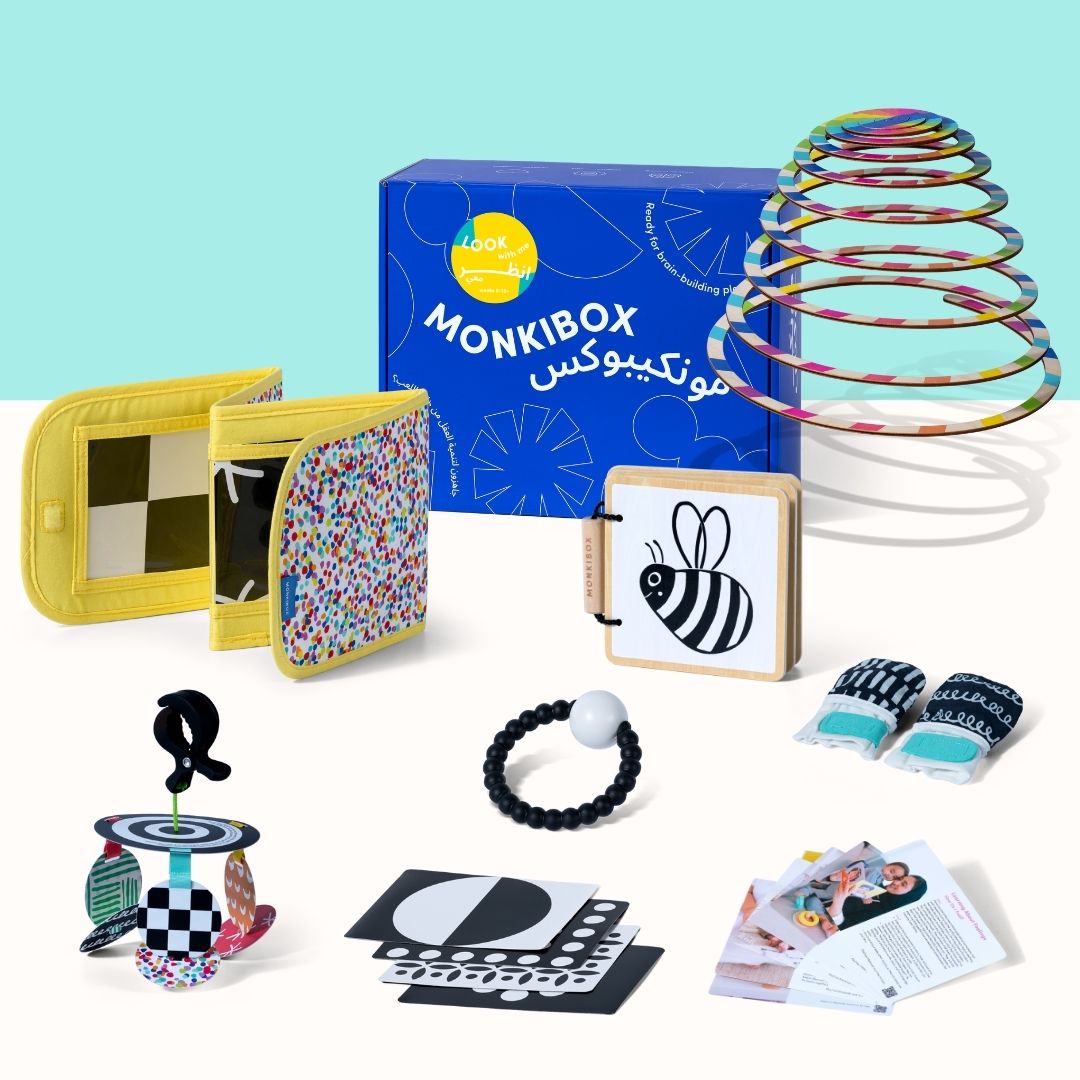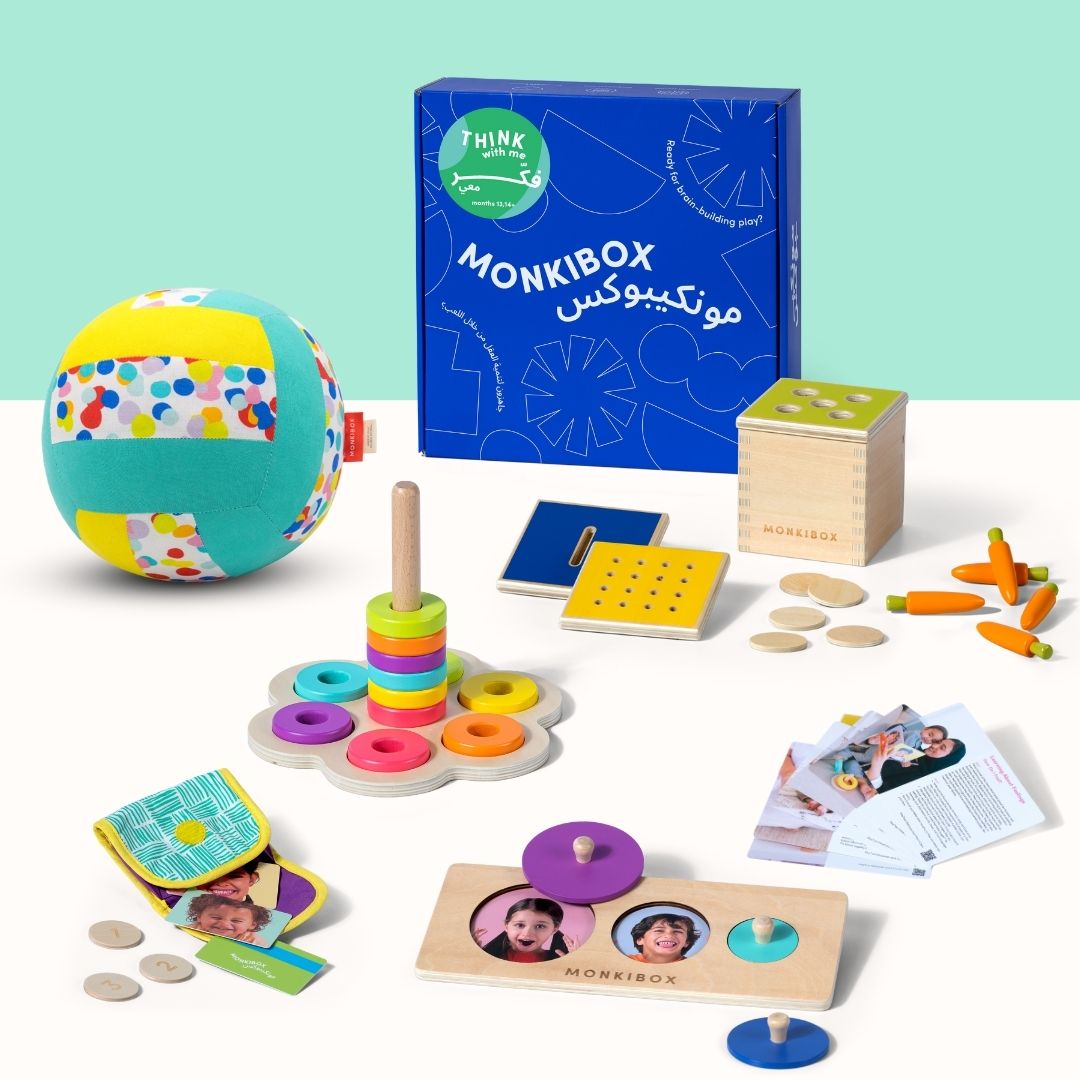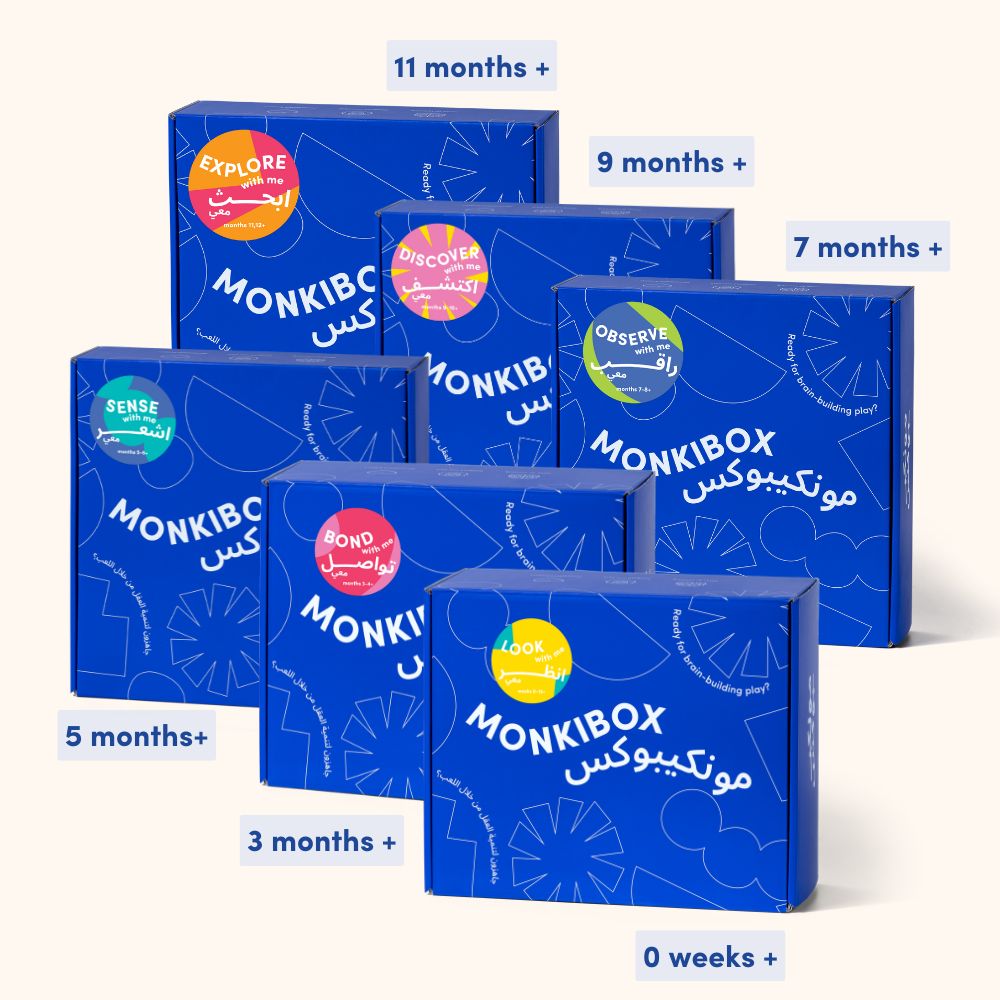The Harvard Center on the Developing Child released a method that any parent or caregiver can implement to help build your baby's brain, and it's called Serve and Return.
This way of interacting with your baby is remarkable, and it helps develop your baby's cognitive, social, or physical skills. What's more, they also found evidence that it helps with moral development, self-confidence, strong mental health and can even spark a motivation to learn.
Here's how it works in 5 steps:
-
When you detect a serve (an interaction from your baby), share the focus of your baby's attention.
To detect a serve, you first need to be aware of the serve. This can be a facial expression, a cooing sound, a point in a particular direction, or a word.
Example: Your baby starts babbling at his reflection in the mirror while on his belly. Get on the floor with him, make eye contact, and point to his reflection to share his experience.
Objective: Engaging in the interaction with your baby will encourage more of these actions. By joining with him and sharing his focus, you're also strengthening your bond.
-
Return the serve by showing support and excitement for their action
Make it clear for your baby that you noticed their discovery and that you are excited by it, too.
Example: Smile, nod your head, and show her that you agree! "Look at the beautiful baby! Look at his cute little nose."
Objective: Responding will make your baby feel comforted and understood.
-
Name it!
Use every opportunity as a learning opportunity and to build your baby's vocabulary. Give it a name when your baby looks at something and expresses curiosity, excitement, or interest.
Example: When you look at your baby's reflection in the mirror, repeat words like "nose," "eyes," "cheeks." You can already start to add extra details to your interactions like "brown eyes" or "rosy cheeks" or encourage further interaction, "touch the baby's nose.
Objective: Naming the object and repeating it for her not only helps him learn these words but also lets him know you're interested and you care about what's going on in his world.
-
Wait for a response to keep the interaction going.
Even if the response is non-verbal, give them a moment to participate in the conversation. The most important part of this step is to wait. Don't mistake your baby's silence for disinterest or indifference - he might need a little extra time to process what he sees and hears.
Example: When you ask him, "do you want to touch the baby's nose?" he will pause. Take some time to let it all sink in. Whatever his response is, a smile, reaching out, giggling, you can respond to that again.
Objective: Pausing for a moment will help your baby feel more comfortable and confident in developing and sharing his world and ideas with you. It also helps your Abby understand how conversation works.
-
Practice beginning and ending an action
Babies make it pretty clear when they lose interest in an activity. Let your baby take the lead when they want to end one activity and start a new one. When they look away or seem more interested in something else, you can say "bye-bye" to signify the end of an activity.
Example: While you're on the floor with your baby, he might start to squirm and move his focus away from the mirror. You can say something like "bye-bye baby" or "all done!" to signify that you understand that he is ready to stop looking at his reflection.
Objective: You want to promote more of these serve and return opportunities, and allowing your baby to have some control over beginning and ending an activity can help.
You don't have to serve and return at every moment during the day, but your curious little baby and your daily routine will give you plenty of natural opportunities to practice these steps.
Start the development journey with MonkiBox. Montessori-inspired toys designed to give your child the best start.





